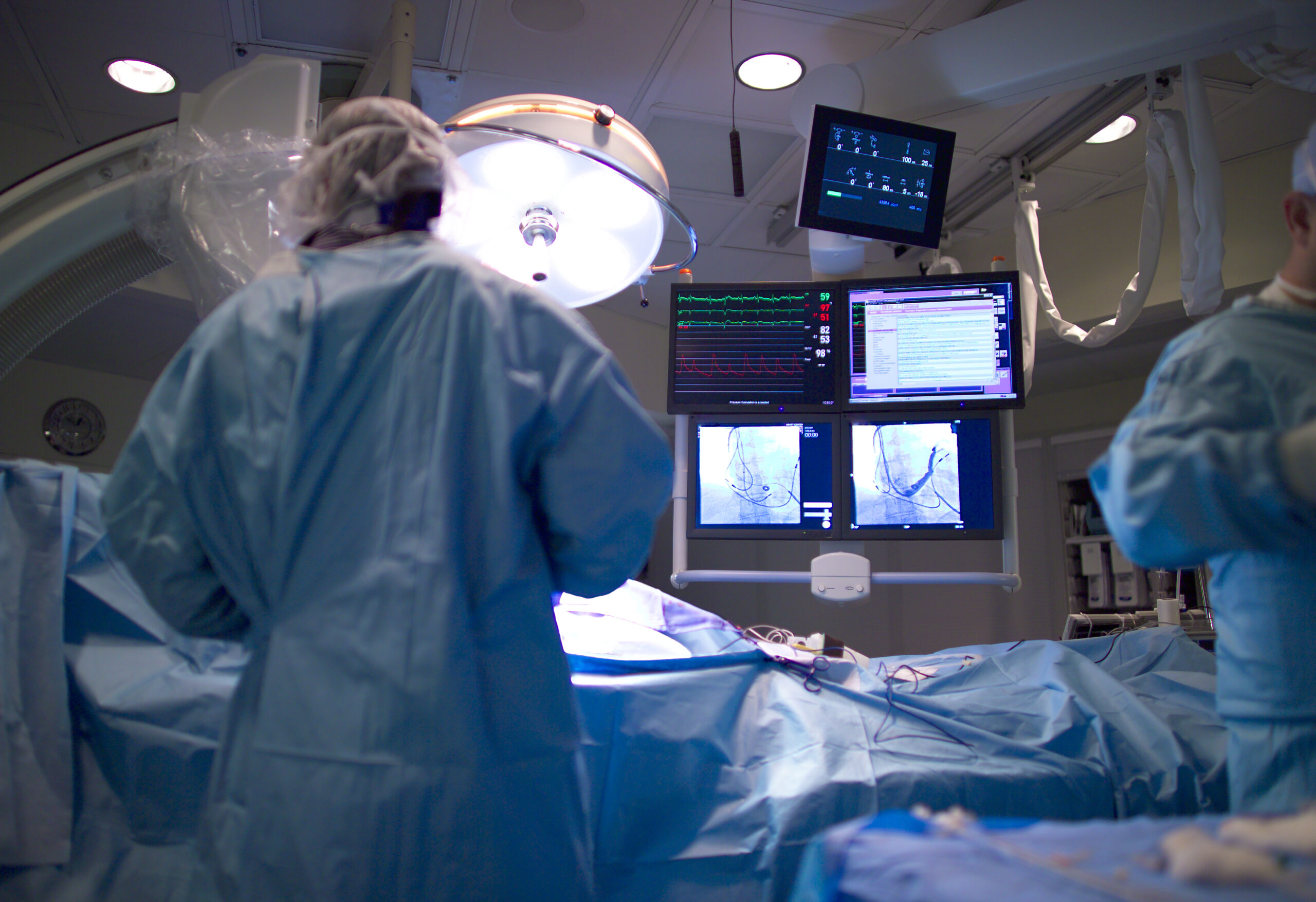In this discussion with Dr. David Cameron, Chair of the Breast International Group (BIG), we delve into the landscape of breast cancer research today, clinical trials and the incorporation of the patient voice in breast cancer research. With a vast repository of knowledge and expertise in international clinical trials, Dr. Cameron’s insights offer a valuable understanding of where we stand in breast cancer research today.
For Dr. Cameron, his journey into breast cancer research stems from his belief in clinical trials as a means to better understand breast cancer.
“Clinical trials need collaboration within and across countries, and it’s important for the academic community to be involved in the delivery of these trials,” he says.
With BIG being the largest umbrella group of academic breast clinical trialists across the world, the global collaboration aims to accelerate the discovery of innovative treatment options and garners insights into the multifaceted nature of breast cancer.
The Evolving Landscape of Early Detection
According to Dr. Cameron, while there is hope and expectation among many, especially women, for rapid advancements in early breast cancer detection, tangible progress in the very initial stages of detection has been somewhat limited. It’s important to note that while men can and do develop breast cancer, the vast majority of cases are found in women.
As of now, the most effective strategy for early detection is personal awareness. Women need to be vigilant and proactive about any changes they observe in their breasts. If anything seems unusual, the immediate next step should be a consultation with a physician. Regular mammography remains the recommended method for most people in terms of routine screening. While other imaging techniques can be employed and may sometimes detect cancer, personal awareness and timely consultation are crucial.
However, there is certainly hope on the horizon. For example, the field of molecular research is buzzing with cutting-edge technologies and their applications. Researchers are exploring the possibility of using blood tests as a means to detect breast cancer earlier than current methodologies allow, potentially even before it becomes noticeable to the patient or detectable through imaging. Dr. Cameron points out that while this avenue of research isn’t the primary focus of BIG, numerous groups worldwide are diving deep into it. The goal is to discover an easy-to-apply test for the earliest detection of breast cancer.
Breakthroughs in Treatment
BIG has been at the forefront of numerous clinical trials. While they’ve led over 50 trials, a substantial number have been supported by external entities, predominantly pharmaceutical companies. However, a few standout trials led directly by BIG have particularly grabbed the medical community’s attention.
One such pivotal trial was “POSITIVE,” a study largely backed by academic groups that shed light on a common concern for younger women diagnosed with breast cancer. The results were truly positively uplifting as they found that young women with early endocrine-responsive breast cancer who wish to start a family after their diagnosis can safely pause treatment. This interruption allows them the time and opportunity to conceive without a heightened fear of their breast cancer reoccurring. This groundbreaking revelation provides hope and options for younger patients looking to balance their treatment with family planning.
Another transformative trial highlighted by Dr. Cameron was the “APHINITY” trial. This study, funded by Roche, witnessed significant collaboration from BIG, especially in terms of international collaboration, patient recruitment and monitoring outcomes. The trial’s results showcased the benefits of adding pertuzumab to the regimen of trastuzumab combined with chemotherapy. This specific combination was tested in women with HER2+ breast cancer that had metastasized to the lymph nodes. The outcome? Improved survival rates. Such advancements underscore the monumental progress being made in treating one of the most common cancers in women.
Disease-Specific Challenges in Enrollment
The path to patient enrollment in trials is fraught with challenges, especially given the heterogeneous nature of breast cancer. As Dr. Cameron highlighted, “breast cancer isn’t one disease. It’s a series of different diseases in terms of how the cancer is going to behave.”
For many breast cancer patients, enrolling in clinical trials is not straightforward. It requires a nuanced understanding to ensure that patients find the most suitable trials tailored to their unique needs.
Dr. Cameron shed light on some specific barriers that breast cancer patients face:
Location and Attitude
A foundational issue for patients is the availability of a trial at their treating hospital. The attitude of the medical staff is also equally pivotal. While many healthcare professionals are supportive and empathetic, some may inadvertently discourage participation through skepticism or lack of enthusiasm.
Changing Treatment Philosophies
Over the last few decades, breast cancer treatments have evolved. Historically, dose escalation studies were the norm, where the intensity of treatment was increased, often through additional drugs or prolonged hormone treatments. However, there’s a growing understanding that some patients might be overtreated, leading to unnecessary side effects.
This divergence in treatment philosophy — escalating treatment for some and de-escalating for others — can be confusing for patients. A patient might question: If I have a good chance of being cured, why is my treatment being reduced? Isn’t there a risk of the cancer returning?
The Complexity of Breast Cancer
Breast cancer is not a monolithic disease; it manifests differently in different individuals. This variation often complicates the decision-making process. A patient’s prognosis and the behavior of their specific type of cancer can differ significantly from the general perceptions of breast cancer.
Influence of Public Perception
Breast cancer, being a widely discussed topic in media and public forums, has imprinted certain perceptions in people’s minds. A newly diagnosed patient may have preconceived notions about the disease, fueled by social media, magazines and newspapers. This influx of information can sometimes mislead patients, as the reality of their diagnosis might differ from common public perception. This discrepancy can add to the confusion when considering clinical trial enrollment.
Incorporating the Patient’s Voice
For many years, BIG has operated its major trials with the guidance of a steering group. This group comprises representatives from collaborative and academic groups, and if involved, from the sponsoring pharmaceutical company. Intriguingly, BIG has always ensured the inclusion of at least two patients in the group who have experienced the disease firsthand. Their involvement provides an invaluable perspective, ensuring the trials remain patient centric.
However, as Dr. Cameron points out, merely including patients in a steering group might not be sufficient. In traditional scenarios, the medical community decides the trials and then seeks the patient’s perspective on how they should be conducted. Dr. Cameron believes that it’s essential to go a step further back.
He envisions a setting where patients have a say not only in how the trials are run but also in which trials are conducted in the first place. This means actively understanding the questions that patients want answered and their priorities.
Acknowledging the strides made globally, Dr. Cameron mentions that several academic groups have long involved patients in oversight and in shaping the questions for trials. However, the pace and approach vary across regions due to cultural differences. BIG, recognizing the importance of patient voices, has initiated a process that brings together patients from different countries to actively participate in shaping trial questions.
But there’s a challenge: most breast cancer patients, understandably, do not have prior knowledge of oncology trials. Their journey often starts with a diagnosis that can be overwhelming.
Recognizing this, Dr. Cameron emphasizes the importance of mentorship and training. The aim is to equip patients with the knowledge they need to comprehend the nuances of breast cancer management. By doing so, they can offer informed insights during the initial stages of trial design.
It’s evident that with leaders like Dr. David Cameron and institutions like BIG, the future of breast cancer research is both promising and patient centric. With each new discovery, we move closer to a world where breast cancer can be detected earlier, treated more effectively and perhaps one day, eradicated entirely.












Join or login to leave a comment
JOIN LOGIN